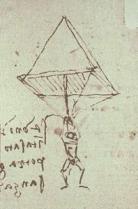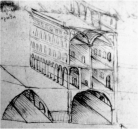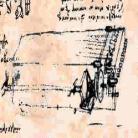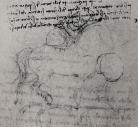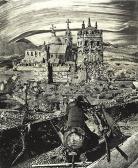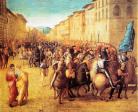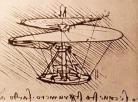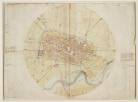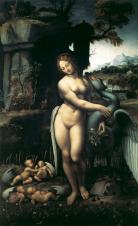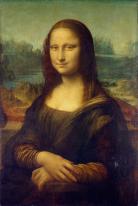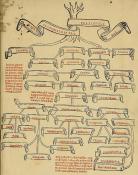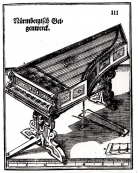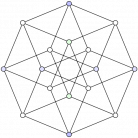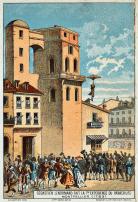Leonardo da Vinci and the Renaissance
Created by Dino Franco Felluga on Sat, 12/29/2018 - 20:24
Part of Group:
This timeline will support a 6-credit study-abroad program for Purdue's Honors College occurring in Paderno del Grappa, Florence and Venice over May 2019. It will be created by the 21 students joining Dino Franco Felluga in Italy for the course.
Timeline
Chronological table
| Date | Event | Created by | Associated Places | |
|---|---|---|---|---|
| circa. 1480 to circa. 1490 |
Leonardo da Vinci’s CatapultWithin the time of the Renaissance, significant revolutionary developments in the applications, properties, and laws of universal sciences were sought and attempted to be explained. As such, in specifically analyzing the mechanical properties of systems and the universal laws of motion, leading Renaissance man, Leonardo da Vinci, sought to investigate his fascination with motion by exploring the principle functionalities and fundamental qualities of moving apparatuses. Believing that both machines and humans were systems designated to move, da Vinci experimentally evaluated physical phenomena and visually depicted his theoretical models within his prized and unpublished, Codex Atlanticus, the principal manuscript collections that pertain to his designed machines and mechanisms. Within his investigations of motion, he was noted for investigating the frictional and angular properties of what Aristotle had once coined as “simple machines,” such as inclined planes, levers, screws, pulleys, axels, and wheels, but was notably distinct in further attempting to improve complex machines with his new understandings of the principles of motion. By essentially deriving and comprehending Newton’s First Law of motion, with his exception being his ignorance regarding the properties of gravity, da Vinci was able to utilize his preliminary knowledge of torque, tension forces, and angular motion to reimagine and theoretically explore an improved and ideal catapult design. By the Renaissance era, catapults had already established themselves as one of the most valued weapons of the Eastern Hemisphere, and although gunpowder had become a new staple of warfare mechanics, da Vinci understood that this new substance was not completely reliable during his time and led him to attempt to innovatively explore his studies of motion while proposing innovative and improved designs for the previously created catapult. Thus, after settling in Milan and working as a Renaissance defense contractor under his patron, Il Moro, da Vinci worked diligently in drafting mechanical military and designs that explored his idealized properties of complex technical processes, which included the catapult. Da Vinci is known to have developed two designs, the single and double arm system, for his ideal catapult, each of which utilized what is referred to as the leaf-spring system to optimize the weapon’s accuracy and power. Da Vinci’s new designs distinguishably improved the preceding catapults by incorporating a rotating drum rather than a bow and draw-string. Regarding the motion of the launch arm, the systems were said to have increased rotational velocity and an optimization of angular momentum using bending leaf spring sections which would provide an overexerted physical force upon the release of the systems activation mechanism. Arguably the most imperative aspect to the functionality of da Vinci’s catapult is the leaf spring system which is a pliable, flexible beam constructed though the layered stacking of sheets of metal or laminated wood. When constructing these leaf springs, it is imperative that, as the layers are stacked, their length decreases linearly to improve the density of material in the beam’s center, making the edges of the leaf spring more flexible. With this design, when assembled, the leaf spring apparatus can achieve greater curvature and thus more effective propellant power. The primary distinction between the single and the double arm catapult designs is the incorporation of pawl and rachet system and worm gear system. In analyzing the single arm catapult, the weapon’s pawl and rachet system would secure the launch arm to its lowered position by situating grooves of a flywheel to the arm’s tines while bending the singular leaf spring. This was imperative in avoiding accidental ejections and unwanted injuries common with previously developed catapults. Furthermore, the double arm system would use a winding, worm gear system that would rely on two leaf springs to create torsion tension while gradually positioning the throwing arm to a lowered position. The use of two leaf arms unfolding outwards had the cumulative effect of distributing immense and significant power to the launch arm thereby applying a large centrifugal acceleration to the projectile relative to the rotating launch arm.
With this illustrative depiction of utilizing rotational motion to optimize the launching mechanisms of the familiar catapult, da Vinci was said to have created the most effective and mechanically efficient catapult ever invented. This system, if scaled correctly, was projected to fire objects to a range of approximately one quarter mile. However, the design contained a plethora of disadvantages that prevented its ultimate creation. For example, the construction of steel leaf springs would have been extremely cost inefficient due to the expensive nature of acquiring multiple steel plates less than a millimeter thick, mortars were simultaneously developed by da Vinci which created a greater force of impact to enemy armies and were more cost-effective, and the extreme velocity applied by the contorting leaf springs would have eventually decreased the structural rigidity of these springs and resulted in an eventual snapping that could have resulted in catapult operators’ deaths or significant injuries. Nevertheless, da Vinci’s catapult continues to represent the culmination of his infatuation with investigating the physical properties of perpetual motion devices. Sources: Catapult Model: Leonardo da Vinci’s Catapult Model. (n.d.). Retrieved May 6, 2019, from http://www.leonardodavincisinventions.com/leonardo-da-vinci-models/leona... Hucbald, H. (2007, April 14). A Leonardo da Vinci Leaf Spring Catapult. Retrieved May 6, 2019, from http://www.hucbald.ramst.ca/articles/leonardo_catapult.html Isaacson, W. (2018). Leonardo Da Vinci. New York: Simon & Schuster Paperbacks. Leonardo Da Vinci's Life: Da Vinci’s Catapult. (n.d.). Retrieved May 6, 2019, from https://www.davincilife.com/catapult.html Moon, F. C. (2016). Machines of Leonardo Da Vinci and Franz Reuleaux: Kinematics of Machines from the Renaissance to the 20th century. Place of publication not identified: SPRINGER.
|
Benjamin Koszyk | ||
| circa. 1480 to circa. 1519 |
Leonardo da Vinci's ClockworksDa Vinci drew and developed many components of clocks, and some designs of entire clocks. These include a variety of gears and escapements, a very accurate three-dial clock for his time, and an alarm clock. |
Eric Liu | ||
| 1482 |
Da Vinci Begins the Sforza Monument HorseTaking with him the lessons he learned from the Colleoni monument creation under Verrocchio to Milan, Da Vinci dared to dream bigger and create a more impressive equestrian statue. Even before he moved to Milan, there were discussions about his creation of this impressive monument. In 1482, Da Vinci accepted the challenge to build the greatest equestrian statue as a monument to Francesco Sforza, the father of Lodocivo Sforza, the Duke of Milan (Grierson, 1959). Sources:
Grierson, P. (1959). ERCOLE D'ESTE AND LEONARDO DA VINCI'S EQUESTRIAN STATUE OF FRANCESCO SFORZA. Italian Studies, 14(1), 40-48.
|
Juliana Sarisky | ||
| 1483 |
Verrocchio's clay model chosen for the Colleoni monumentVerrocchio worked on his clay model of the Colleoni monument from 1479 to 1483 in competition with other great sculptors of the time. Since Da Vinci began working with Verrocchio in 1466, he played a great role in the creation of this clay model. Da Vinci studied the anatomy of horses, and thus created many detailed sketches for the Colleoni monument. In 1483, Verrocchio's clay model and plans for the statue were chosen as the winner of the competition for the Colleoni monument. Da Vinci's idea for the bronze saving casting process was said to have played a major role in the choosing of Verrocchio's clay model (Kulenovic and von Platten). Sources:
Kulenovic, R., & Von Platen, F. (n.d.). Questions Concerning the Equestrian Statue in Remembrance of the Condottiere Bartolemeo Colleoni in Venice Created in the Workshop of Andrea Del Verrocchio. Retrieved from http://www.museumldv.com/venice.htm
|
Juliana Sarisky | ||
| 1483 |
Leonardo da Vinci sketches the parachuteWhile da Vinci is known for designing a simple helicopter, he also made a sketch for a flotation device, better known today as a parachute. He stated "if a man has a tent made of linen of which the apertures [openings] have all been stopped up, and it be twelve braccia [about 23 feet] across and twelve in depth, he will be able to throw himself down from any great height without suffering any injury." The design consisted of sealed linen cloth around the sides of a pyramid with a square base. It differed from modern parachute designs, as these are typically rounded and include a harness. The notebook in which this sketch was included was dated 1483. Like many of his designs, it was likely never tested during his lifetime. Source and Image Source:
|
Nicole Geer | ||
| 1483 |
Confalonieri prints the first copies of Theophrastus's Historia plantarumTheophrastus (371 - 287 BC) was a student of Aristotle and is attributed with the title as the father of botany. Theophrastus wrote books on botany such Enquiry into Plants and On the Causes of Plants. In these books, he worked to categorize plants into the groups, study their uses and how to grow them and took note on the anatomy of plants. Based on Theophrastus work we can see how early botanical study revolved around the idea of the usefulness of the plant and trying to create basic distinctions between different plant types. Bartolomeo Confalonieri was the first to print Theophrastus's books in 1483 while in Treviso which allowed much of Europe to learn about his findings. Though it is not known for sure, Theophrastus writing would have been available prior to Leonardo's observations of plants and could have been read by the artist. |
Kayla Cole | ||
| 1484 |
The Black DeathFrom 1484 to 1485, the Black Death swept through Milan, where Leonardo was living at the time. Several outbreaks occurred in a short period of time. The narrow and crowded city streets helped with the spread of disease, and in the end, about one third of Milan's population had been killed. It was this devastation that inspired da Vinci to make plans for a better city, and ideal city. Leonardo worked for several years to perfect the designs. The ideal city would have two levels. The lower level would feature a series of canals to be used for transportation of people & goods, it would also be used as a sewage system. The upper level would be the picturesque part of the city, with wide roads and extravagant buildings. Tradesmen and lower class workers would travel on the bottom level, while higher class gentlemen would be on the top roads. Though da Vinci's plans were a detailed and well thought out design for a more sanitary city, they were never put to use, as it would have required a complete rebuild of the city. http://www.da-vinci-inventions.com/ideal-city.aspx Photo Source: https://www.fastcompany.com/90163788/the-plague-inspired-da-vinci-to-design-a-city-we-should-steal-his-ideas |
Allison Skadberg | ||
| circa. 1488 to circa. 1488 |
Da Vinci Sketches the Viola OrganistaPreserved notebooks and sections of the Codex Atlanticus provide various sketches of da Vinci’s concept for a keyboard that can imitate a bowed string instrument. As there were various iterations of the design, the instrument evolves over time. Originally utilizing a mechanized bow, the sketches evolved to include a foot-pedal that controlled wheels to play the strings and ended with a system that would lower individual strings onto an automatic belt in order to make sound. In all, six pages across various manuscripts would be dedicated to the instrument, although none contained enough detail for craftsmen to build a working model from the drawings alone. The Organista would never be made by da Vinci, as many of these drawings are incomplete. An early sketch of the instrument that utilized a mechanized bow did not show how that bow would be affixed to the instrument. Some drawings included double strings attached to each key (as opposed to the typical one per key), likely to increase the volume of the instrument. Ultimately, da Vinci’s drawings were rather difficult to decipher when attempting to envision a singular model of the device. Raccolta Vinciana. (n.d.). Retrieved May 14, 2019, from https://bibdig.museogalileo.it/Teca/PDFProvider?pdf=/./000/000/337/33723... Da Vinci, L. (2011, March 16). Viola organista [Digital image]. Retrieved from https://commons.wikimedia.org/wiki/File:Viola_organista.jpg |
Christopher Embry | ||
| circa. 26 Jun 1490 |
Leonardo da Vinci makes the "Vitruvian Man"On June 24, 1490, Leonardo da Vinci had dinner with another artist, Giacomo Andrea, to discuss the "Vitruvian Man". Andrea showed da Vinci his sketches, which would provide a foundation for da Vinci's drawing. Some time after, da Vinci finished his own famous sketch, illustrating the perfects proportions of the human body. This sketch also has many religious and mathematical implications. Source: Isaacson, Walter. “Vitruvian Man”. Leonardo Da Vinci. Simon & Schuster, 2017. Photo Source: https://commons.wikimedia.org/wiki/File:Da_Vinci_Vitruve_Luc_Viatour.jpg |
Alexa Lahey | ||
| 1493 |
Da Vinci Completes Sforza Monument Clay ModelDa Vinci's initial works contained too abstract ideas and could not be cast into bronze with a single pour, retendering them incompletable. In his first two main designs, he had a horse rearing up over a fallen foe (Hanson, 2012). Although the fallen foe aided with the stability of the horse, it prohibited a single pour casting. His third design significantly differed from the other two, as it did not contain the fallen foe and was in a frozen trot with two suspended legs (Hanson, 2012). By 1490, Da Vinci began more intense work on the monument and completed a 24-foot clay model of a more detailed version of his third design by 1493, which sat in the Cortile Vecchio of the Castello at Milan (Grierson, 1959). Before Da Vinci’s attempt with his clay horse, no one had created such an equestrian statue with two suspended legs. One suspended leg, as in the Colleoni monument, poses a great challenge with stabilizing the center of gravity; having two suspended legs further heightens this challenge. To account for the instability of the statue with two airborne legs and to protect it against several environmental factors, Da Vinci had an intricate structure of the horse. He designed the inside of the horse to have a steel “skeletal structure,” essentially trusses within the horse, and thick metal walls (Ahl, 1995, p. 136). Even though such framing led to other problems, it miraculously maintains the structure of the horse. Such a comprehensive design stands as a feat for the 1400s and 1500s. Sources:
Ahl, D. (1995). Leonardo da Vinci's Sforza monument horse: The art and the engineering. Bethlehem [Pa.]: London; Cranbury, NJ: Lehigh University Press; Associated University Presses. Grierson, P. (1959). ERCOLE D'ESTE AND LEONARDO DA VINCI'S EQUESTRIAN STATUE OF FRANCESCO SFORZA. Italian Studies, 14(1), 40-48. Hanson, E. J. (2012). Inventing the sculptor: Leonardo da Vinci and the persistence of myth (Doctoral dissertation, Washington University) [Abstract]. All Theses and Dissertations (ETDs),765. doi: https://doi.org/10.7936/K7PN93MQ |
Juliana Sarisky | ||
| 1494 to 1498 |
Second Italian WarThe Second Italian War began when King Louis XII of France pressed his claim on the thrones of Milan and Naples. Louis had a claim to the thrones through his paternal grandmother and in 1499, he invaded Italy. He took Milan, Genoa, and Naples. When Duke Lodovico Sforza was overthrown, Leonardo da Vinci fled Milan with his assistant and friend to Venice. In Venice he was employed as a military architect and engineer. He designed methods of defending the city from naval attack. Louis was driven out of Naples in 1503 by Spain after a defeat at Cerignola. The battle of Cerignola was the first battle in history won by gunpowder small arms. Britannica, The Editors of Encyclopaedia. “Italian Wars.” Encyclopædia Britannica, Encyclopædia Britannica, Inc., 4 Mar. 2016, www.britannica.com/event/Italian-Wars. “Italian War of 1499–1504.” Wikipedia, Wikimedia Foundation, 3 Feb. 2019, en.wikipedia.org/wiki/Italian_War_of_1499%E2%80%931504. |
Lindsay Rubin | ||
| 1494 to 1494 |
Pacioli's First PublicationIn 1494 Luca Pacioli (a Franciscan monk and geometer) traveled to Venice to publish Summa de arithmetica, geometria, proportioni et proportionalita, which had the goal of being a comprehensive summary of mathematical knowledge at the time. Almost none of the mathematics featured was Pacioli’s original work, but he did give credit to those who produced the results he mentioned, which included thinkers like Euclid, Boethius, Sacrobosco, and Fibonacci . It had a completely summary of Euclid’s Elements and it studied games of chance (Pacioli presented an attempt at a solution to a problem in this subject which was later deemed incorrect). A revolutionary aspect of this text is that it was published in Italian (the vernacular), not Latin. The publishing of this work also established Pacioli’s name in the academic and intellectual communities at the time, most definitely catching the attention of da Vinci (who bought a copy as soon as it was published). It is reasonable to speculate that da Vinci recruited Pacioli to the Milan court because he was so impressed by this work.
Sources Isaacson, Walter. Leonardo Da Vinci. Simon & Schuster Paperbacks, 2018. “Luca Pacioli.” Luca Pacioli (1445-1517), School of Mathematics and Statistics, University of St. Andrews, Scotland, www-history.mcs.st-and.ac.uk/Biographies/Pacioli.html.
The image source is Wikimedia Commons, and it is in the public domain in the United States because it was published (or registered with the U.S. Copyright Office) before January 1, 1924. |
Garrett Mulcahy | ||
| 1495 |
Commission of The Last SupperDa Vinci’s Last Supper was commissioned by Duke Ludovico Sforza for the refectory, a room used for communal meals, of the monastery of Santa Maria delle Grazie in Milan. In early 1494, Sforza had become the official Duke of Milan and he wanted to enhance his stature as well as create a mausoleum for himself and his family, so he commissioned da Vinci, a famous artist at the time, to paint this popular religious scene on the wall of this monastery. Sources: Leonardo da Vinci's Last Supper. (June 21, 2012). Retrieved from http://www.italianrenaissance.org/a-closer-look-leonardo-da-vincis-last-supper/ Issacson, W. (2017). The Last Supper. In Issacson, W, Leonardo da Vinci. (pp. 273-292). New York, NY: Simon & Schuster Image Source: Da Vinci, L. (1495). Study for the last supper. [Sketch]. Retrieved from https://www.leonardodavinci.net/study-for-the-last-supper-2.jsp |
Leila Yanni | ||
| 1496 to 1499 |
Collaboration between Pacioli and da VinciAfter arriving in Milan in 1496, Pacioli formed a very close connection with da Vinci in which he tutored da Vinci in mathematics. The two men had a deep friendship that transcended their mathematical endeavors; their notebooks include comments to one another like “Well Leonardo, you can do more of this on your own” and “learn the multiplication of roots from Maestro Luca." They also shared the task of providing entertainment to the Court of Milan; their entertainments included brainteasers, magic tricks, and riddles. Mathematically speaking, the duo shared a deep interest in geometric shapes. Pacioli successfully taught da Vinci the works of Euclid’s Elements and less successfully taught him arithmetic techniques like multiplying squares and square roots. During this time, da Vinci created several sketches of polyhedra that would be featured in Pacioli’s publication De Divina Proportione. In 1499 the French invaded Milan and the pair was forced to flee the city, eventually settling in Florence (where they lived together). Sources “Leonardo Da Vinci.” Leonardo Da Vinci (1452-1519), School of Mathematics and Statistics, University of St. Andrews, Scotland, www-history.mcs.st-and.ac.uk/Biographies/Leonardo.html. Isaacson, Walter. Leonardo Da Vinci. Simon & Schuster Paperbacks, 2018. “Luca Pacioli.” Luca Pacioli (1445-1517), School of Mathematics and Statistics, University of St. Andrews, Scotland, www-history.mcs.st-and.ac.uk/Biographies/Pacioli.html. The image source is Wikimedia Commons, and it is in the public domain in the United States because it was published (or registered with the U.S. Copyright Office) before January 1, 1924. |
Garrett Mulcahy | ||
| 1496 |
Colleoni Equestrian Statue Monument InaugurationAfter being chosen as the winner of the Colleoni equestrian statue monument, Verrocchio spent five years working on the statue until he died in 1488. By this time, Da Vinci no longer lived in Venice, as he had moved to Milan in 1482 to work for Lodocivo Sforza, the Duke of Milan. As such, the state of Venice handed off the Colleoni monument project to Da Vinci's competitor, Alessandro Leopardi, who was a sculptor and architect (Kulenovic and von Platten). Using Verrocchio and Da Vinci's initial designs as well as his own, Leopardi finished the monument and placed his name on the statue base. Finally, the Colleoni equestrian statue monument was inaugurated in 1496 and still stands, as a feat of art and engineering, in front of the San Giovanni e Paolo church today. Sources:
Kulenovic, R., & Von Platen, F. (n.d.). Questions Concerning the Equestrian Statue in Remembrance of the Condottiere Bartolemeo Colleoni in Venice Created in the Workshop of Andrea Del Verrocchio. Retrieved from http://www.museumldv.com/venice.htm
|
Juliana Sarisky | ||
| 9 Feb 1498 |
Completion of the Last SupperThree years after the painting’s commission, Last Supper was completed. A digital reconstruction of what the painting might have looked like when it was finished reveals rich colors and captivating details that are barely visible today. da Vinci’s use of perspective in this painting is ingenious, and he was able to effectively use many new Renaissance techniques to create a vibrant and impactful masterpiece. The central vanishing point of the painting is directly behind Jesus’s head, drawing the viewer towards the main subject of the painting. Close examination reveals that da Vinci actually hammered a nail into the center of the wall and cut thin incisions radiating out that guided his painting lines and helped his accuracy. However, the perspective is not perfect because the painting is so large that it appears different depending on the viewer’s vantage point as the viewer is closer to some parts of the painting than others. To remedy this issue, da Vinci applied complex perspective, using a mix of natural and artificial perspective, as well as optical tricks to minimize distortion. He designed the painting so that the perspective appears perfect when viewed from a door in the right wall, where the monks entered the refectory. He then created an artificial ideal vantage point 30 feet from the wall, at eye level with Jesus, again emphasizing Jesus as the focus of the painting. In the painting, da Vinci used the table to hide the lines where the floor hits the back and side walls, and he painted a cornice that hides the fact that the ceiling doesn’t extend all the way above the table. This effective use of optical tricks and complex perspective shows “his mastery of complex rules of natural and artificial perspective, but it also shows his flexibility at fudging those rules when necessary” (Issacson p. 281). da Vinci also used newer painting ideas to create his masterpiece. Standard linear perspective had been well studied at the time, but “Leonardo’s most important contribution to the study of perspective was to broaden the concept to include not just linear perspective...but also ways of conveying depth through changes in color and clarity” (Issacson p. 274). Da Vinci included three windows in the back of the painting that look out into the far distance of a mountain range, and one can clearly see the blurriness and blueness of the mountains as a fantastic example of his aerial perspective. One can also see the impressive blue gradient of the sky, sfumato that adds to the realism of the painting. The windows extend the three dimensional space seemingly into infinity, contrasting the flatness of many previous paintings. Jesus and the disciples surrounding him possess incredibly expressive emotion and vibrant, rippling movement. da Vinci continuously studied how to portray emotions using body language and gestures, believing that “‘a picture of human figures ought to be done in such a way as that the viewer may easily recognize, by means of their attitudes, the intentions of their minds’” (Issacson p. 282). Through his intensive human studies and detailed portrayal of his figures’ emotions, he uses the Renaissance concepts of naturalism and humanism to pay homage to the complexity of the human form and mind. da Vinci’s choice to not include any gold halos or gold background also helps focus on the human forms of the figures through its removal of anagogic space. Finally, da Vinci incorporated the revolutionary concept of involving the viewer in the painting by adjusting the lighting in the painting – the light appears to come from an actual window high on the left wall of the refectory, which blends reality and imagination and involves the viewer in the painting. While da Vinci used many of these new and complex techniques, he also referenced past versions of The Last Supper through his decision to put all of the figures on the back side of the table. He was certainly capable of painting people on both sides of the table, but putting them all on one side maintains this tradition and does not shock viewers with its boldness. At the same time as he is referencing the past, he incorporates new ideas as the figure placement also allows the viewer to clearly see Jesus and each disciple’s face, body, and movements, emphasizing their emotions as da Vinci wanted and adding to the effect of the viewer being included in the painting. Sources: Leonardo da Vinci's Last Supper. (June 21, 2012). Retrieved from http://www.italianrenaissance.org/a-closer-look-leonardo-da-vincis-last-supper/ Issacson, W. (2017). The Last Supper. In Issacson, W, Leonardo da Vinci. (pp. 273-292). New York, NY: Simon & Schuster Image Sources: Bando, K. (2016). Digital Reconstruction of The Last Supper. [Image]. Retrieved from http://www.leonardoresearch.com/The%20Last%20Supper.html The Last Supper Perspective (n.d.) Retrieved from https://www.leonardodavinci.net/the-last-supper.jsp#prettyPhoto |
Leila Yanni | ||
| 1499 to 2504 |
First Italian WarIn response to threats from the Republic of Venice and the Kingdom of Naples, Duke Ludovico Sforza of Milan invited France and Spain into Italy to protect Milan. The First Italian War began when Charles VIII, the French King, invaded Italy in 1494 in response to Sforza's request for aid. He took Naples but was driven out by Spain after Italy and Spain created an alliance against him. Britannica, The Editors of Encyclopaedia. “Italian Wars.” Encyclopædia Britannica, Encyclopædia Britannica, Inc., 4 Mar. 2016, www.britannica.com/event/Italian-Wars. |
Lindsay Rubin | ||
| 1499 |
French Army Destroys Sforza Monument Clay ModelDa Vinci's clay model of the Sforza monument horse was a feat of engineering, with two horse legs suspended and a total height of 24 feet. It remained standing in the Cortile Vecchio of the Castello at Milan until it was destroyed in 1499. It is believed that when the French army came across the statue they brutally destroyed it, using it as "target practice" (Grierson, 1959, p. 40). The French army's destruction was the ultimate factor in the incompletion of the monument. Since Da Vinci died in 1519, he never recreated the clay model and his horse was not attempted until centuries later with greater advancements in technology. Thus, his brilliance and Renaissance combination of art and engineering were not fully realized and appreciated until centuries later. Sources:
Grierson, P. (1959). ERCOLE D'ESTE AND LEONARDO DA VINCI'S EQUESTRIAN STATUE OF FRANCESCO SFORZA. Italian Studies, 14(1), 40-48.
|
Juliana Sarisky | ||
| circa. 1500 |
Leonardo da Vinci Creates his Aerial Screw DrawingIn the late 1400s, Leonardo da Vinci created his aerial screw drawing in his notebook. Because da Vinci was so observant of nature and his surroundings, it is believed this design was partly based on his observations of the spinning of maple seeds as they fall to the ground. It also closely resembled Archimedes' screw used for irrigation purposes in 200 BC. This screw was used to move water from a canal or other water source to an area of higher ground. In order to power the aerial screw, four men, standing on the platform, are required to push the four wooden shafts in a circular motion. Da Vinci believed this would generate enough force to lift the machine into the air. He intended for the aerial screw to be made of reed, linen, and wire. Although he never created a physical model of this design, we now know that da Vinci's aerial screw would be too heavy to be lifted into the air. The force generated by the four men is not strong enough to overcome the strong pull of gravity from this heavy device. The aerial screw design is interesting because it contains no elements that resemble birds. Da Vinci realized wings enable birds to fly but wings are not required for flight. Ahead in his understanding of aerodynamics, da Vinci realized flight occurs due to the compression of air. He used this principle in his aerial screw design, which relies on the circular motion of the device compressing the air below and causing the top portion to lift. Image Source: https://commons.wikimedia.org/wiki/File:Leonardo_da_Vinci_helicopter.jpg Text Sources: Capra, F. (2014). Learning from Leonardo: Decoding the notebooks of a genius.San Franciso: BK, Berrett-Koehler. Foley, W. (1976). From da Vinci to the present—a review of airscrew theory for helicopters, propellers, windmills and engines.Paper presented at AIAA 9thFluid and Plasma Dynamics Conference, San Diego, CA. Giacomelli, R. (1930). The aerodynamics of Leonardo da Vinci. The Journal of the Royal Aeronautical Society, 34(240), 1016-1038. The Helicopter. (n.d.). Retrieved from http://www.leonardodavincisinventions.com/inventions-for-flight/leonardo-da-vinci-helicopter/. Leonardo da Vinci: The aerial screw. (2017). Retrieved from https://www.elenco.com/wp-content/uploads/2017/10/EDU61002-2.pdf. |
Ali Jeffries | ||
| circa. 1502 |
Leonardo da Vinci Designs Arched BridgeLeonardo da Vinci was a proficient engineer as well as artist, and among his designs was a bridge entirely supported by the parabolic arch underneath it. His notebook includes two illustrations of this arched bridge. He specified that the bridge, which would span the Golden Horn connecting Galata to Istanbul, would be 600 braccia long, which is equivalent to 366 m or 1200 ft; 400 braccia spanned the inlet itself, with 100 braccia over the land on either side. At its highest point, the arch would rise 70 braccia, or 43 m, above the water. While da Vinci was correct in asserting that a parabolic shape would offer extraordinarily strong support, the exact mathematical techniques required to build a bridge of this design were not developed until centuries later. These sketches, found in Manuscript L, are currently located at the Institut de France in Paris. Sources: Atalay, B. (2013, January 22). LEONARDO’S BRIDGE: Part 2. “A Bridge for the Sultan”. Retrieved May 11, 2019, from https://blog.nationalgeographic.org/2013/01/22/leonardos-bridge-part-2-a... Books, Maps and Calligraphic documents in the Topkapi Museum. (n.d.). Retrieved May 12, 2019, from http://kilyos.ee.bilkent.edu.tr/~history/booknmaps.html C. (2011, April 10). Bridge built using Leonardo da Vinci's design for a self supporting bridge.Retrieved May 12, 2019, from https://commons.wikimedia.org/wiki/File:Leonardo_da_Vinci_bridge_Karby.jpg (Originally photographed 2011, April 10) The image is from Wikimedia Commons and taken by user Cntrading. It is used with the Free Art License. |
Katherine Li | ||
| circa. Summer 1502 to circa. Spring 1503 |
Leonardo as a patron of Cesare BorgiaIn the summer of 1502, da Vinci was commissioned by Cesare Borgia to design military weapons/technology. He was appointed as Borgia's "senior military architect and general engineer." At this time, Borgia was at the height of his power and was seeking to gain control of the Papal States of Romagna and the Marches. Leonardo left Florence for 10 months and traveled, surveying the territories. It was also during this time that da Vinci created his designs for the machine gun. Due to his contact with Borgia, Leonardo also met Niccoló Machiavelli. Heydenreich, Ludwig Heinrich. “Leonardo Da Vinci.” Encyclopædia Britannica, Encyclopædia Britannica, Inc., 28 Apr. 2019, www.britannica.com/biography/Leonardo-da-Vinci. |
Ben Hardin | ||
| circa. 3 Jul 1502 to circa. 3 Jul 1503 |
Letter to Sultan Beyazid II of IstanbulWhile in Florence around 1502 or 1503, Leonardo da Vinci pursued a position as a scientist and engineer in the court of Sultan Beyazid II of Istanbul. To showcase his innovative ideas, he sent a “cover letter” to the Sultan proposing four projects: a windmill, a hydraulic pump, a bridge connecting Galata to Istanbul, and a suspension bridge across the Bosporus connecting Turkey and Asia. The bridge connecting Galata to Istanbul across the Golden Horn was da Vinci’s first formal proposal for a self-supporting arched bridge. As proposed, the bridge would be the longest single span bridge at the time and self supporting due to the parabolic shape of the arches underneath it. The sultan rejected this radical proposal and da Vinci’s design remained unused. The connection between this letter and da Vinci's sketches of the arched bridge design was established in 1952, as the letter, stored in the Istanbul National Archives, had been mislabeled and misattributed. The letter is now on display in the Topkapi museum in Istanbul. Sources: Atalay, B. (2013, January 22). LEONARDO’S BRIDGE: Part 2. “A Bridge for the Sultan”. Retrieved May 11, 2019, from https://blog.nationalgeographic.org/2013/01/22/leonardos-bridge-part-2-a... Erik Cleves, K. (2014, April 8). [Galata]. Retrieved May 11, 2019, from https://commons.wikimedia.org/wiki/File:Galata_(13971741453).jpg The image was taken by Erik Cleves Kristensen and is licensed under the Creative Commons Attribution 2.0 Generic license. It is provided through Wikimedia Commons. |
Katherine Li | ||
| circa. Autumn 1502 to circa. Autumn 1502 |
The First Geometric MapUnder the service of Pope Alexander VI’s son, Cesare Borgia, Leonardo Da Vinci was named “General Architect and Engineer”. The Pope wanted a paper visual of the land newly acquired by the Roman armies and wished to improve upon their defense. Thus, Da Vinci joined the troops in Imola and began his expedition there. The map created is believed to be one of the first geometric maps. This differed from medieval maps as it displayed no symbols of religion and displayed the world as accurately as possible according to measurements. However, one can see there are 8 lines protruding from the center of the map, which represent the winds, and within those sections, the map is further divided into 8 more sections. Historians believe this increased accuracy, as Leonardo created the map based on this viewing and measurements from the Palazzo Comunale, in the center of town, and did not have grid lines. What is also impressive is that not only were military details included, such as nearby towns and their distance, but so were older parts of the town. One theory is that Da Vinci based his map on an older map from 1473, thus the details were simply added from it. As far as historians know, this is the oldest map preserved of a town that still exists. Source: “Leonardo Da Vinci (Vinci 1452-Amboise 1519) - A Map of Imola.” Royal Collection Trust, rct.uk/collection/912284/anbspmap-of-imola. |
Chloe Romero | ||
| circa. 1503 to circa. 1503 |
Map of Valdichiana ValleyThis map was supposedly created when the Da Vinci was still in service of Cesare Borgia. Yet there is evidence that there was little military purpose. While the locations all have names, the rivers are detailed with names as well. Many believe that Da Vinci created the map to build a canal from Florence to the sea. Using the map created, one could plan a dam for Lake Chiana, allowing the canal to be used even during the dry season. Due to this fact, the map seems to serve a more commercial purpose. Alas, it could also be used for transporting soldiers and equipment as well. As the canal was never made, the purpose of the map, or the canal, is not truly known. Sources: “Map of Tuscany and the Chiana Valley.” Web Gallery of Art, wga.hu/html_m/l/leonardo/13maps/2tuscany.html. “A Map of the Valdichiana.” Royal Collection Trust, www.rct.uk/collection/912278/a-map-of-the-valdichiana. |
Chloe Romero | ||
| 1503 to 1507 |
Leda and the SwanLeda and the Swan is a painting completed by Leonardo da Vinci in 1508. The completed work of art displays highly detailed images of plants. The plants da Vinci draws are unlike most of those seen in other artists paintings prior to this time. The Pre-Renaissance era of art marked a time when plants were shown as being distinct from each other but only slightly. Da Vinci was one of the first to portray plants in a very organic lifelike manner. In preparation for painting Leda and the Swan, Leonardo completed many studies and sketches of plants that then lead him to write down his observations in his notebooks. The original Leda and the Swan was lost but has since been recreated and now is displayed in the Uffizi. image from Wikimedia Commons, commons.wikimedia.org/wiki/File:Leda_Melzi_Uffizi.jpg and within the public domain and fair use. |
Kayla Cole | ||
| circa. 1503 to circa. 2 May 1519 |
Leonardo Paints the Mona Lisa from 1503 to his death in 1519In 1503, Leonardo da Vinci was given a commission to create a portrait of Francesco del Giocondo's wife, Lisa Gherardini. He began work this year, and continued working on it until his death in 1519. It is believed that an assitant also painted the Mona Lisa del Prado in conjunction with the original, copying the original painting. |
Brendan Murphy | ||
| circa. 1504 |
Raphael Sketches the Mona LisaThe Mona Lisa had a very large effect on daVinci's contemporaries, especially Raphael. It can be seen in numerous Raphael paintings that he took large inspirtion from the portrait. His "Yound Woman with a Unicorn" is exremetly similar to the Mona Lisa, with folded hands, three quarter tilt, and mysterious smile. However, he also drew an early version of the Mona Lisa, as noticible differences between the sketch and the final product are evident. |
Brendan Murphy | ||
| circa. 1504 |
da Vinci's Mortar DesignsLeonardo da Vinci created designs for mortars that improved upon the current military technology. Cannons of the day shot large, solid spheres. To increase the efficiency of the mortar, da Vinci designed projectiles that contained mini gunpowder shots. The shots were packed into petal-shaped iron pieces that formed a ball. The cannonball was loaded into the mortar and fired. da Vinci designed more effective projectiles including shells that exploded upon impact or scattered projectiles over an area. His drawing shows a front mortar firing bombs that explode on impact into a cloud of metal shrapnel. The back mortar loaded with stones or small-caliber iron balls that are fired at the enemy like grape-shot. One of his earlier designs was a mortar mounted on a boat for naval combat. His designs are thought to be the precursor to machine guns. |
Lindsay Rubin | ||
| 1505 to 1505 |
da Vinci states his intention to write a book on the transformations of geometric shapesAs an artist, da Vinci’s interest in geometry was rooted in the subject's application to aesthetics. It is for this reason that da Vinci was more invested in learning the “continuous” mathematics of shape as opposed to the “discrete” math of arithmetic. Since da Vinci viewed shapes as continuous, he found himself especially interested in the transformations of one shape to another. One can find evidence of this interest in da Vinci’s sketches of elevated polyhedra, where a polyhedron essentially explodes into another one. da Vinci also explored this idea of transformation in the plane through the task of squaring the circle, which is the task of creating a square with the same area as a given circle. His notebooks show a fixation with the task, eventually displaying 169 ways to do the procedure. In 1505 da Vinci set out to make a publication on the transformation of shapes; unfortunately, this publication never came to fruition, but this idea remained an obsession of him throughout the rest of his life. Source Isaacson, Walter. Leonardo Da Vinci. Simon & Schuster Paperbacks, 2018. The image is from Wikimedia Commons and in the public domain. |
Garrett Mulcahy | ||
| 1505 to 1510 |
Leonardo Creates Detailed Sketches of PlantsWhile working on his painting Leda and the Swan, Leonardo created several sketches of plants, such as A star-of-Bethlehem and other plants (c.1506-12), in order to better represent them within his painting. Sketches These sketches show a high level of detail that later carries into his art and pays close attention to the form and structure of plants and how that can change for each one. These sketches have been collected and held on to by the Windsor Castle Royal Collection since the 17th Century. Image from Wikimedia Commons, commons.wikimedia.org/wiki/File:Leonardo_da_vinci,_Star_of_Bethlehem_and_other_plants.jpg. This image is under public domain and free use. |
Kayla Cole | ||
| 1507 |
Cesare Borgia diesCesare Borgia, of whom Leonardo da Vinci was a patron, dies in a battle with rebels outside of Viana. |
Ben Hardin | ||
| circa. 1508 to circa. 1508 |
Mapping a New WorldWith the discovery of the Americas, new world maps had to be drawn and with the knowledge that the Earth is not flat, many cartographers struggled with the representing the continents as they physically were. Da Vinci took a new approach of making 2, 4-leaf clovers next to each other to create the map. For many, this was a revolutionary idea. The Arctic was shown as a sea and the Antarctic was shown as a continent, concepts that were newly discovered at that time as well. Additionally, Da Vinci was the first to use the word America. Most of his depiction was based on information from Amerigo Vespucci. Still, there were some in accuracies in the map as Da Vinci had not perfected the perspective needed. Europe is enlarged to a great degree. Da Vinci’s approach was a step in the right direction however, as the rectangular map was extremely inaccurate at that time, and even today. Sources: Chepkemoi, Joyce. “What Was Leonardo's World Map?” WorldAtlas, 5 June 2017, worldatlas.com/articles/what-was-leonardo-s-world-map.html. “Leonardo Da Vinci's Mappamundi.” ODT Maps, www.odtmaps.com/behind_the_maps/amundi-map-details.asp. |
Chloe Romero | ||
| 1509 to 1509 |
Publication of De Divina ProportioneIn this year Luca Pacioli and Leonardo da Vinci’s joint work De Divina Proportione was published in Venice; this text focused on the role of proportions and ratios in architecture, art, anatomy, and math. Pacioli provided the mathematical content (again, most of his work was unoriginal) and da Vinci provided sixty illustrations of geometric figures. Each geometric figure was depicted in two ways: solid faces and then solid edges. The solid face representation was more typical of the time but was disadvantageous in the fact that it was difficult to get a sense of the whole shape. The other approach is the solid edge approach, in which each of the edges are emphasized and the sides are left “see through.” This was a novel approach to geometric representation at the time, although it is debated whether da Vinci invented this representation. It is also a possibility that he was sketching wooden figures of these shapes as constructed by Pacioli. In either case, da Vinci’s perfection of perspective certainly aided in the two-dimensional representation of these shapes. It is important to note that these geometric figures were the only sketches of da Vinci that were published during his lifetime. Sources Isaacson, Walter. Leonardo Da Vinci. Simon & Schuster Paperbacks, 2018. “Luca Pacioli.” Luca Pacioli (1445-1517), School of Mathematics and Statistics, University of St. Andrews, Scotland, www-history.mcs.st-and.ac.uk/Biographies/Pacioli.html. The image source is Wikimedia Commons, and it is in the public domain in the United States because it was published (or registered with the U.S. Copyright Office) before January 1, 1924. |
Garrett Mulcahy | ||
| 1510 |
Codex LeicesterThe Codex Leicester, later renamed the Codex Hammer, was one of da Vinci's many scientific journals. It was published in 1510 and its contence mainly focused on his ideas on water and the moon. An interesting note about this text is the "mirror image" style it is written in, meaning that it should be read from right to left, appearing normally in its reflection. The Codex als holds the record for the second largest price tag, purchased by Bill Gates in 1994 for $30.8 million dollars, making the manuscript also the only of da Vinci's journals to be privatly owned. |
Corinne Evans | ||
| 1513 |
Leonardo da Vinci's Heart StudiesLeonardo da Vinci began his studies of the heart, specifically looking at the flow of blood through the aorta and closure of the aortic valve. Da Vinci first noted in his studies that it was the heart that was the center of circulation, not the liver which was the belief at the time produced by anatomist Galen, whom da Vinci studied from. With this information, da Vinci continued to look deeper in the mechanics of the heart and wrote detailed descriptions of the blood flow. Da Vinci used his work with fluid dynamics and fluid drag in 1510 to help him describe the closure of the aortic valve in the heart. In his notes, he wrote about how the blood pushed through the valve circles back around in dilated trunk of the aorta, currently known at the sinuses of Valsalva, to close the valves. An interesting point to make is that sinuses of Valsalva are named after Antonio Valsalva, who “discovered” them in the 1700s. Originally, people believed the valve closed by blood back flowing into the aorta once the heart relaxes, pushing the valve closed. But Leonardo argued by saying “This would be impossible, because if the blood beats against the valves of the heart while they are wrinkled and folded, the blood that presses from above would press down and crumple the membrane.” He then devised an ingenious way to prove them wrong. Da Vinci used sculpting skills to create a glass heart model. Using water and grass seed in the model, he could visualize the flow around that valve. Unfortunately, like most of da Vinci’s work, his heart studies were not published at the time. His theory of the blood flow forming spiraling eddies to close the valves was not rediscovered or confirmed until 450 years later around 1960 by Brian Bellhouse at Oxford University. Sources and Picture from: Isaacson, W. (2017). Leonardo da Vinci. New York: Simon and Schuster |
Christina Hetisimer | ||
| 1514 to 1542 |
Heliocentric TheoryAlthough he was not the first to propose the concept, Copernicus is considered the father of the heliocentric model of the universe, claiming that the sun was the center of the universe rather than the sun. This discovery was highly controversial, and Copernicus therefore published his work on his deathbed in fear of retribution from the church. Along with this theory, he also incorrectly claimed that stars are immovable and Earth orbited in a sphere, however, his ideas were still revolutionary. His ideas were also built upon by future scientists such as Brahe and Kepler who were able to mathematically fix some of Capernicus' miskates such as the distance of stars from Earth and the shape of a plant's orbital. Similar to the invention of the telescope, Copernicus published his work after da Vinci's death, meaning the theories da Vinci made on the mood originated with the assumption that the Earth was the center of the universe. |
Corinne Evans | ||
| circa. 1515 to circa. 1515 |
Moving the Arno: An Idealized FlorenceReturning to Florence, Da Vinci devised a scheme that would make the city more efficient. The main idea was straightening the Arno, likely to make it more geometrically pleasing to work with. He also added that there would be five total main streets, three running perpendicularly over the river and two running parallel to it. This would make the flow of traffic much more efficient and less confusing as there would be no twist and turns. The city limits would be bordered by a wall in the shape of a 11-sided polygon. On the bottom there are 9 names for the 9 gates Da Vinci added on this map, each at a different street and wall intersection except for one. When taking into account all of the different projects Da Vinci did in his lifetime, one may say that this project connected to his idea of a two-level city. This would only increase efficiency along the main streets. Alas, like many other Da Vinci ideas, this idealized city was never built. Source: “A Schematised Plan of Florence.” Royal Collection Trust, www.rct.uk/collection/912681/a-schematised-plan-of-florence. |
Chloe Romero | ||
| 1517 |
Romorantin PalaceIn 1517, Leonardo was asked to design a new palace in France, where he had moved shortly after the fall of Sforza in 1499. The palace that he designed was vast and extravagant, and it had several similarities to the ideal city that he had designed years before. The palace would sit alongside a river, which would allow for a small network of canals to be constructed. The designs included two large, square-shaped palaces and enough smaller buildings around them to make a small village. Unfortunately, in 1519, Leonardo da Vinci passed away, and though his designs were mostly complete, they were abandoned. Because of this, many of his plans for the palace were lost over time, and extensive research has been done to try to recover the missing pieces of his design. Source and Photo Source: http://www.leonardo-da-vinci.net/romorantin-palace/ |
Allison Skadberg | ||
| 1518 |
Flaking of the Last SupperUnfortunately, The Last Supper did not stand the test of time and it began flaking and fading around 1518, only 20 years after its completion. This is because of da Vinci’s failed experimentation with painting materials instead of using traditional fresco techniques. Typically, tempera paint is applied directly onto the wet plaster of the wall which helps it affix to the painting, but its fast drying time meant an area had to be completed in one day’s work and could not easily be reworked later. This didn’t sit well with Leonardo, who preferred a leisurely style of applying thin paint layers over many hours, a style supported by his use of oil paint. He also didn’t have any previous fresco experience, so he decided to use a different approach for The Last Supper. He coated the wall with a layer of ground white stone and white lead primer before painting directly onto the dry plaster wall. He experimented with different proportions of oil and tempera paint in different parts of the painting, as he thought that mixing the types would allow him to still use his method of gradually applying thin layers of paint. However, his experimentation failed and the painting quickly faded and crumbled. When a biography of da Vinci was published in 1550, the author, Vasari, proclaimed that the painting was “ruined”. Today, very little of the original is left. Sources: Issacson, W. (2017). The Last Supper. In Issacson, W, Leonardo da Vinci. (pp. 273-292). New York, NY: Simon & Schuster Harris, B. & Zucker, S. (n.d.) The Last Supper. Retrieved from https://www.khanacademy.org/humanities/ap-art-history/early-europe-and-colonial-americas/renaissance-art-europe-ap/a/leonardo-last-supper |
Leila Yanni | ||
| 1543 |
The "Real" Father of AnatomyIt is Andreas Vesalius, not Leonardo da Vinci, that is known as the Father of Anatomy and is mentioned in modern anatomy books today. Vesalius was an anatomist and physician from Brussels. He published “De humani corporis fabrica” (translated to “On the Fabric of the Human Body”) in 1543, which is known as the first modern anatomy textbook. Vesalius’s book followed many of da Vinci’s previous studies and challenged dogmas set by previous anatomist Galen. Many of Galen’s observations were related to old theory (humorism) and animal dissections, since human dissections were outlawed by Roman Law. Vesalius was able to get his hands on a few human cadavers and rectified some of Galen’s errors, such as the thought the heart contains the great vessels of the body versus the liver. Vesalius was also the “first” to note that bones gave humans their shape and depicted this through detailed drawings of bone, ligament, and muscle. Vesalius described many body systems in extraordinary detail, which was thought to never have been done before. But da Vinci made extraordinary advances and detailed notebook entries of anatomy years before Vesalius was even born. Da Vinci used his artistic ability and mind for mechanics to create detailed drawings of the human body and body systems. Some of his most infamous drawing and notes were related to muscle/ ligaments, the heart, skull, and fetus. His talent as an artist won him opportunities to dissect over 30 cadavers (compared to Vesalius’s few), allowing him to prove Galen wrong years before Vesalius. Unfortunately, da Vinci’s works were never published, so his genius had little impact on the advancement of anatomy. Sources: Bridges, C.D. (2015). Biology 201/203: Human Anatomy and Physiology. Plymouth, MI. Hayden-McNeil. Toledo-Pereyra, L.H. (2009). Leonardo da Vinci: The Hidden Father of Modern Anatomy. Journal of Investigative Surgery, 15(5), 247-249). |
Christina Hetisimer | ||
| 1575 to 1575 |
Hans Heyden Creates the GeigenwerkGerman engineer Hans Heyden creates the first working approximation of the viola organista, the Geigenwerk, paving the way for a category of instrument called the “sostenente piano,” signifying a keyboard instrument that produces a sustained sound (as opposed to the percussive voice of a concert piano). The Geigenwerk deviated significantly from the viola organista, but the primary concept behind both is very similar. The Geigenwerk had forty-four keys and five foot-pedals, used to activate the internal wheels that bowed the stings. The creation of this instrument allowed for the spirit of the viola organista to return to Italy, as a Medici prince would purchase a Geigenwerk in the sixteenth century. Many German craftsmen begin to take da Vinci’s designs, along with the Geigenwerk, as inspiration for their own instruments. The clavichord, a common piano-esque instrument used for composing at the time, was too quiet for public performance and many designers wanted to broaden the available dynamic range as well. Variations of the sostenente piano would continue to be produced as one-off creations until roughly the nineteenth century. Apel, W. L. (1969). Harvard Dictionary of Music. Cambridge, MA: Belknap Press of Harvard University Press. Badura-Skoda, E. (2017). The Eighteenth-century Fortepiano Grand and Its Patrons: From Scarlatti to Beethoven. Bloomington: Indiana University Press. Geigenwerk Praetorius [Digital image]. (2014, October 19). Retrieved from https://commons.wikimedia.org/wiki/File:Geigenwerk_Praetorius.jpg |
Christopher Embry | ||
| 1600 to 1900 |
More modern notions of geometry and space developedDuring these centuries, the mathematical understanding of geometry and space expanded from the plane to n-dimensional Euclidean space and non-Euclidean space. Although none of Euclid’s Elements was deemed incorrect, during the 17th century mathematicians Desargues and Pascal realized that Euclidean geometry was a special instance a more general type of geometry: projective geometry. However, the work of these two mathematicians was not given much attention until the 19th century when their works were rediscovered independently by geometers of that time. Further, the 19th century saw a greater expansion and generalization in the understanding of geometry: the works of Gauss, Riemann, and others developed ideas like the manifold (objects that behave locally like Euclidean space) and curved spaces. Likewise, instead of working in the plane mathematicians were concerned with the aforementioned generalized spaces. More importantly, these new conceptions of space became well-established in standard mathematical instruction by the end of the 19th century. Sources Kline, Morris. “Projective Geometry.” Scientific American, vol. 192, no. 1, 1955, pp. 80–86., doi:10.1038/scientificamerican0155-80. Shearer, Rhonda Roland. “Chaos Theory and Fractal Geometry: Their Potential Impact on the Future of Art.” Leonardo, vol. 25, no. 2, 1992, pp. 143–152., doi:10.2307/1575702. The image is from Wikimedia Commons and in the public domain. |
Garrett Mulcahy | ||
| 1608 |
Invention of the telescopeDespite the common belief that Galileo was the originator of the telescope, it was actually first patented in 1608 by German-Dutch lensmaker Hans Lippershey, though it would not be called a "telescope" for three years, until which it was called a "Dutch Perspective Glass". Its design involved a concave eyepiece aligned with a convex objective lens that was capable of magnifying objects by a magnitude of three. Although Lippershey was the first to patnent his design, there is little information proving he was the origional inventor and the Instrument was greatly improved, however, a year later by Galileo, who was able to design a telescope capable of a magnification of 20 times. This date is particularly significant since da Vinci's obvservations on the moon were made a century before the invention of the telescope. His discoveries reguarding the moon's surface and illumination were made without any magnification or ability to see the surface with any clarity. |
Corinne Evans | ||
| 1609 |
The Moon's SurfaceAfter making vast improvments in the telescope in 1609, Galileo was able to make detailed observations of various planets as well as the moon. One such observation was that the moon was not the perfect spherical surface society assumed it to be, but rather was made up of various valleys, plains, and moutains much like the Earth's surface. This gave further insight into da Vinci's observations on the various dark spots scattered throughout the moon's surface. These discoveries were particularly radical since the moon, like the planets, were through to be perfect celestial beings and the thought of them containing imperfections would have been highly controversial. |
Corinne Evans | ||
| 1651 |
Leonardo da Vinci's Treatise on Painting is publishedA culmination of much of Leonardo's notebook entries and thoughts on painting appears in his Treatise on Painting. Included in the book is a section known as Botany for Painters and Elements of Landscape Painting. It is in this section that Leonardo reveals three discoveries about botany. These discoveries include the arrangement of leaves on a stem, how to determine the age of a tree by its structure, and that new branches form from underneath the bark of a tree. His findings became a staple for future botany and also instructed artists on how to properly display plants in paintings. |
Kayla Cole | ||
| 1652 |
Further DestructionWith Last Supper already in disrepair, in 1652 monastery residents cut a door into the middle of the painting, removing Jesus’ feet and creating the large gray space seen in the bottom of photos of the painting. Later in the 1700s, soldiers of Napoleon Bonaparte turned the refectory into a stable and used the painting as target practice for projectiles. During World War II, the Nazis bombed the monastery, but the painting was luckily protected by sandbags so was not completely destroyed. However, all of this clearly did not help the already-flaking painting. Sources: The Last Supper – by Leonardo da Vinci. (2011). Retrieved from https://www.leonardodavinci.net/the-last-supper.jsp Issacson, W. (2017). The Last Supper. In Issacson, W, Leonardo da Vinci. (pp. 273-292). New York, NY: Simon & Schuster |
Leila Yanni | ||
| 1656 to 1656 |
First Pendulum ClockThe first clock that utilizes the pendulum is attributed to Huygens in 1656. This increased the accuracy of clocks from 15 minutes per day to 15 secinds per day. This led to the development of the 'seconds pendulum' which became a standard 0.994-meter long pendulum used in all quality clocks. |
Eric Liu | ||
| Dec 1783 |
Lenormand's ParachuteSebastien Lenormand is considered to be the first person to make a fully functioning parachute (or at least the first one that was well documented). He jumped from the top of the tower within the Montpellier Observatory in France and safely landed. This parachute was 14 feet. This mechanism was intended to be a portable fire escape, allowing people to escape buring buildings. The jump is recorded to have occured in December of 1783. Source: Britannica, T. E. (2019, January 01). Louis-Sebastien Lenormand. Retrieved from https://www.britannica.com/biography/Louis-Sebastien-Lenormand Image Scorce: Louis-Sébastien Lenormand. (2019, February 05). Retrieved from https://en.wikipedia.org/wiki/Louis-Sébastien_Lenormand |
Nicole Geer | ||
| 26 May 1805 |
Napoleon made king of Italy
In a flamboyant and highly theatrical gesture, Napoleon Bonaparte signifies his political and military dominance over the Italian peninsula with a ceremony in Milan Cathedral, where he crowned himself King of Italy with the ancient, iconic iron crown of Lombardy. This crowning of Napoleon as King is a result of the French conquest of Italy. His full title was "Emperor of the French and King of Italy." ArticlesAlison Chapman, "On Il Risorgimento" Related Articles |
Dave Rettenmaier | ||
| 1822 |
Gallerie dell’Accaedmia acquires the "Vitruvian Man"In 1822, the "Vitruvian Man" was moved to The Gallerie dell’Accaedmia in Venice. Today, it is the current house of the "Vitruvian Man", which is kept in a dim room to keep its authenticity. In person, it is clear to see the meticulousand precise lines of the male figure and attracts many tourists each year. However, it is rarely on display according to dissapointed travelers on TripAdvisor. Sources: https://www.tripadvisor.co.za/FAQ_Answers-g187870-d194254-t4086749-Is_th... Isaacson, Walter. “Vitruvian Man”. Leonardo Da Vinci. Simon & Schuster, 2017. |
Alexa Lahey |



